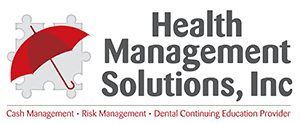
by Health Management Solutions, Inc. | Jun 2, 2023 | dental practice management
In today’s fast-paced healthcare environment, dentists and physicians in Coral Gables, Florida, face the challenge of juggling patient care, administrative tasks, and compliance requirements. To alleviate the burden and enhance overall practice efficiency,...

by Health Management Solutions, Inc. | May 31, 2023 | dental practice management
Running a successful dental practice involves more than just performing oral procedures, managing staff, finances, and administrative tasks can be overwhelming, and significantly divert the dental healthcare professional’s attention from patient care; particularly...

by Health Management Solutions, Inc. | May 9, 2023 | dental practice management, healthcare management
Operating a profitable dental practice is no small task, but overseeing its back-office work is one of the most significant difficulties for dentists. While back-office tasks may seem time-consuming and complex with narrow margins for error, outsourced dental...

by Health Management Solutions, Inc. | Mar 1, 2023 | Uncategorized
Cash flow optimization is one of the primary advantages of using Health Management Solutions for your dental practice. With remote dental billing and revenue cycle management expertise, your dental practice can achieve timely and accurate payment processing, reducing...

by Health Management Solutions, Inc. | Jul 1, 2022 | dental practice management
When you outsource dental billing services, you hand over your dental insurance processing and collection services to a third-party agency. In every dental practice, there’s a team that handles dental insurance’s claims processes. This team is usually the...





